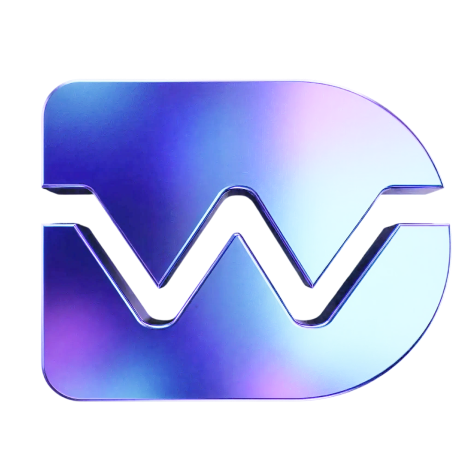

3D Printing Factory platform
The company was utilizing a Manufacturing Production System (MES) platform, FRos, to track its 3D printing production. The platform was initially developed by a team of developers and a few product designers to address the need for increased control over factory operations. However, due to a lack of regular communication between the developers and designers, many design decisions were made without proper input, resulting in visual discrepancies and low user engagement. As the newly hired designer, my task was to develop a new MES to more effectively track and document production in the factories. To achieve this, I conducted thorough research to gain an in-depth understanding of the industry and user needs.
Role
Researcher, Product Designer
Project type
Manufacturing production platform for web
Team
1 Designer / 7 Devs / 1 PM
Contribution
Audit, research, documentation, design, and testing
Tools
Miro, Google Slides, Confluence and Figma
Duration
1 year
Challenges
- The existing platform failed to offer a flexible and tailored workflow for each manufacturing technology, resulting in inconsistent visual design across the company's products.
- The design system lacked the necessary components, requiring me to create them from scratch.
- Building trust among the technicians was a crucial task as they were not trained on how to effectively use the existing factory platform. Being new to the manufacturing industry, I had to take the time to familiarize myself with the industry-specific terminology and vocabulary.
Process
The primary focus of the entire process was to gain a detailed understanding of the users' needs. This involved conducting in-depth research through interviews, analyzing reports, and testing. I travel to Chicago multiple times to interview various stakeholders, visit the factories, and learn about manufacturing production.
1. Research
To begin, I conducted extensive research on the industry and the specific requirements of the users. I organized meetings with all stakeholders, including factory technicians, managers, directors, and engineers. Through these interactions, I developed a set of personas to gain insight into their unique pain points, frustrations, desires, and objectives.
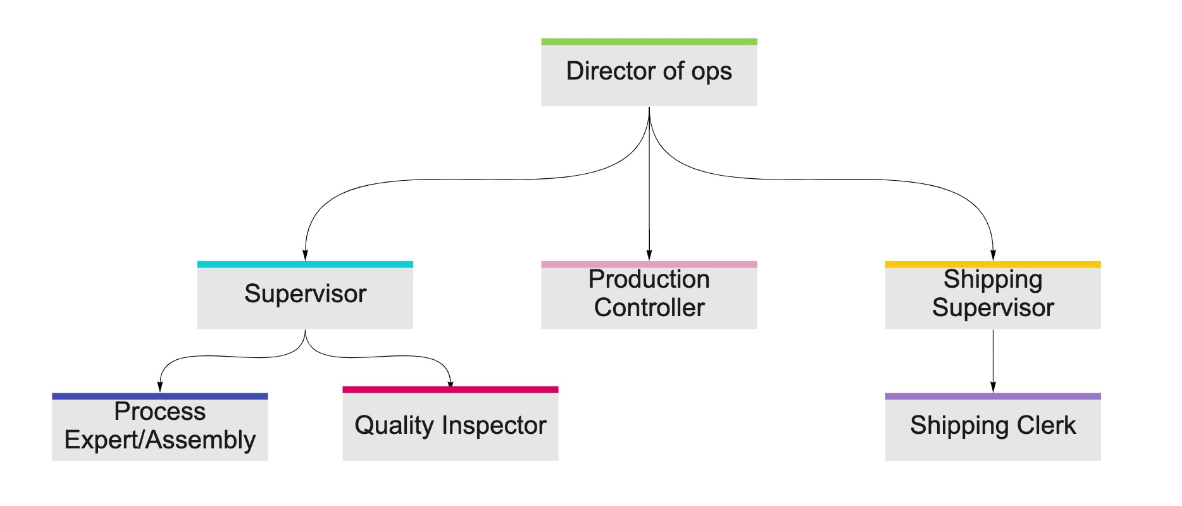
Upon conducting my investigation, I discovered that various roles were present within the factory, each with unique pain points and frustrations. However, my primary target audience for my solution was the process experts, as they would be the prior users of the design. I constructed an organizational chart to gain a more transparent comprehension of the role hierarchy.
After conducting my initial research, I had a list of questions that I needed to answer to develop a solution:






Manufacturing technologies details
I conducted multiple user interviews to comprehend the industry and company services further. I did online research to understand the 3D printing technologies used in the factories and the specifics of each technology.

Technologies workflow breakdown
One of the significant challenges identified in the platform was the inflexibility of creating custom workflows for each 3D printing technology, as each one has its level of complexity. To gain a deeper understanding of the steps involved in each manufacturing process, I organized workshops with lead process experts for each technology and developed the desired workflow. Through this activity, I could identify which areas of the platform required greater flexibility and create a scalable solution that can support current and future 3D printing technologies. Each sticky note represented a step in the production process in the factory.
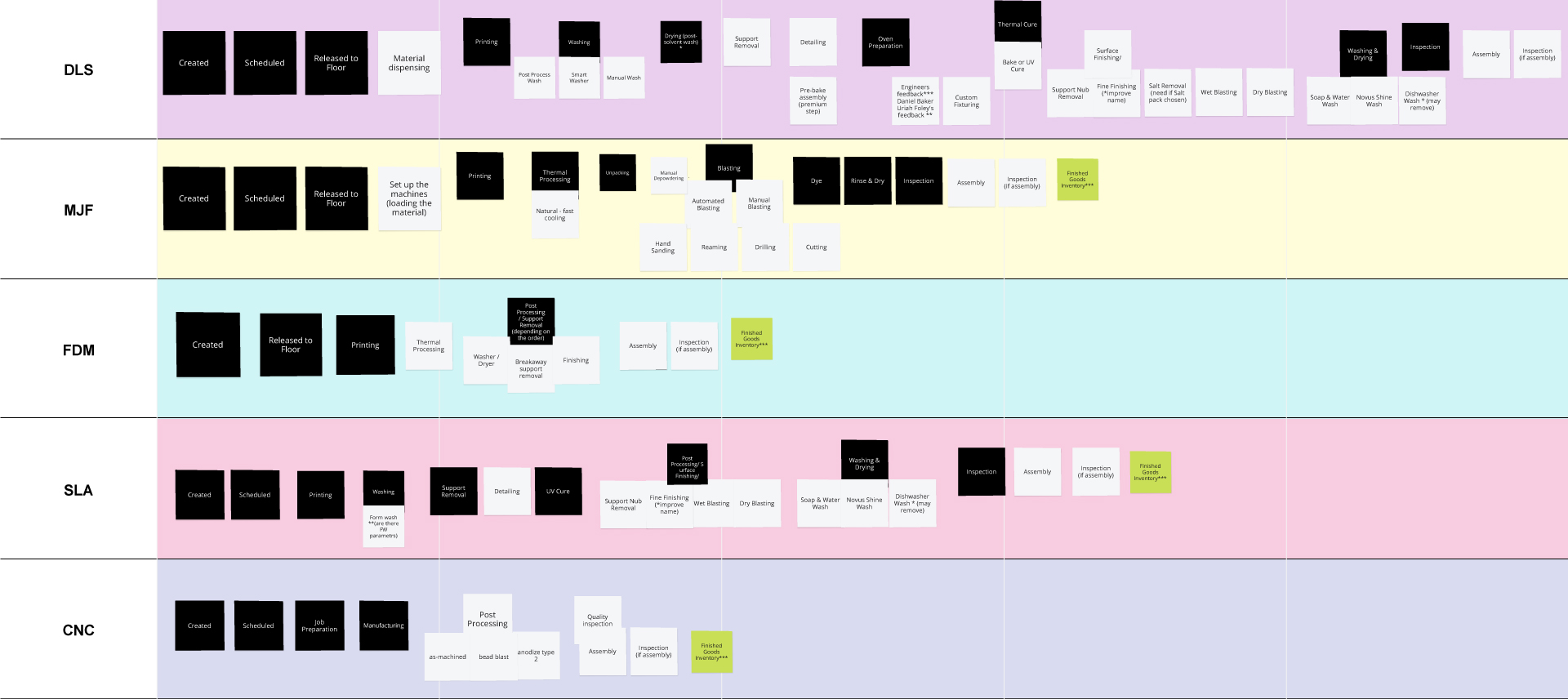
As the previous image illustrates, each technology had its own distinct steps in the production process, and the complexity varied greatly. However, the following image illustrates the existing platform workflow, FRos. It offered a one-size-fits-all workflow for all technologies, which was clearly inadequate due to its simplicity, lack of flexibility, and inability to be customized.

Contextual inquiry research
I had the opportunity to visit the factory in Chicago multiple times and observe my users in their daily work environment through contextual inquiry research. I aimed to identify their struggles and the methods they used to overcome them. I took photographs and learned about the production stations, which allowed me to map the users' regular journeys within the factory.
*Please note that due to a disclosure agreement, the images may be blurry.
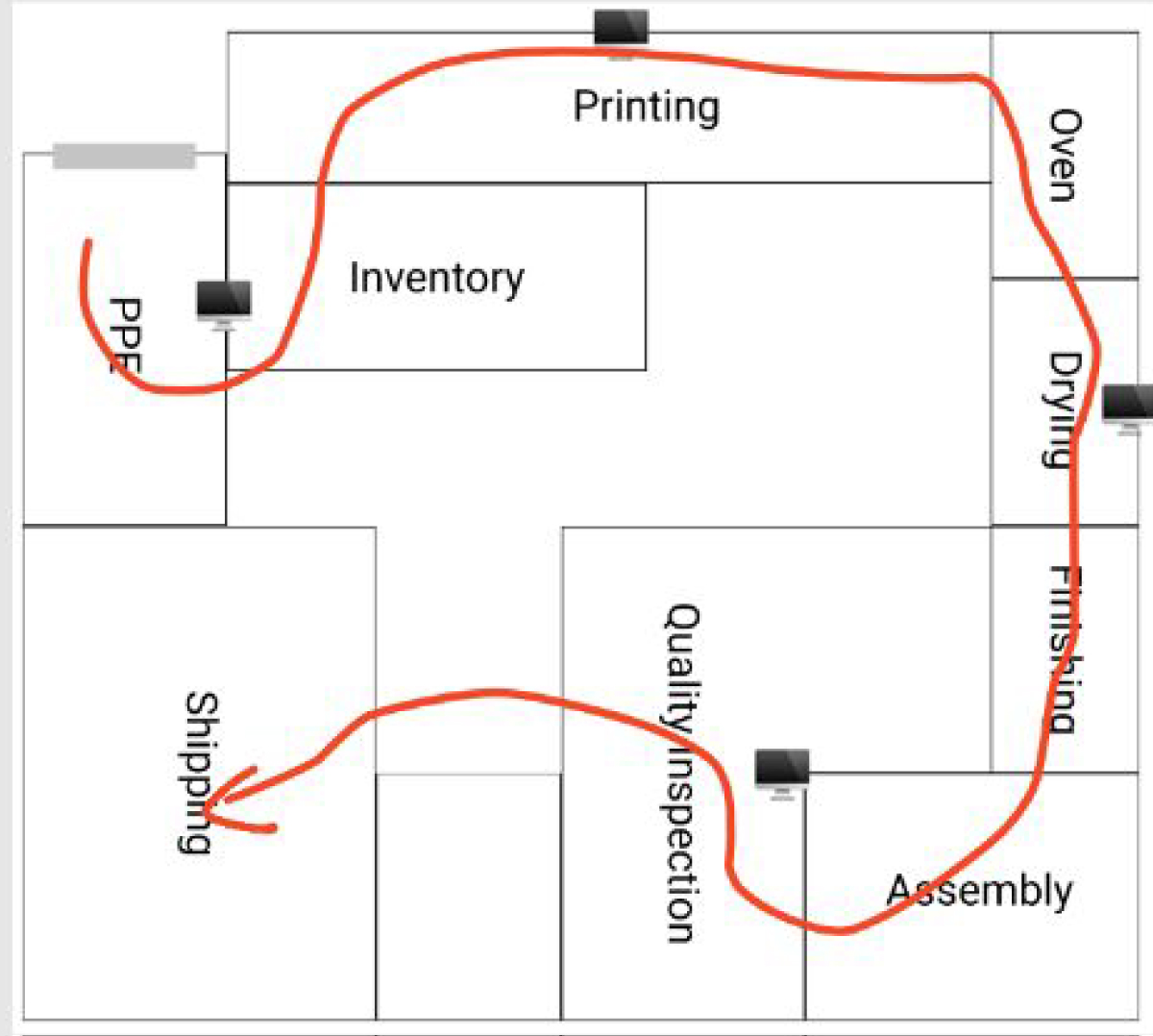
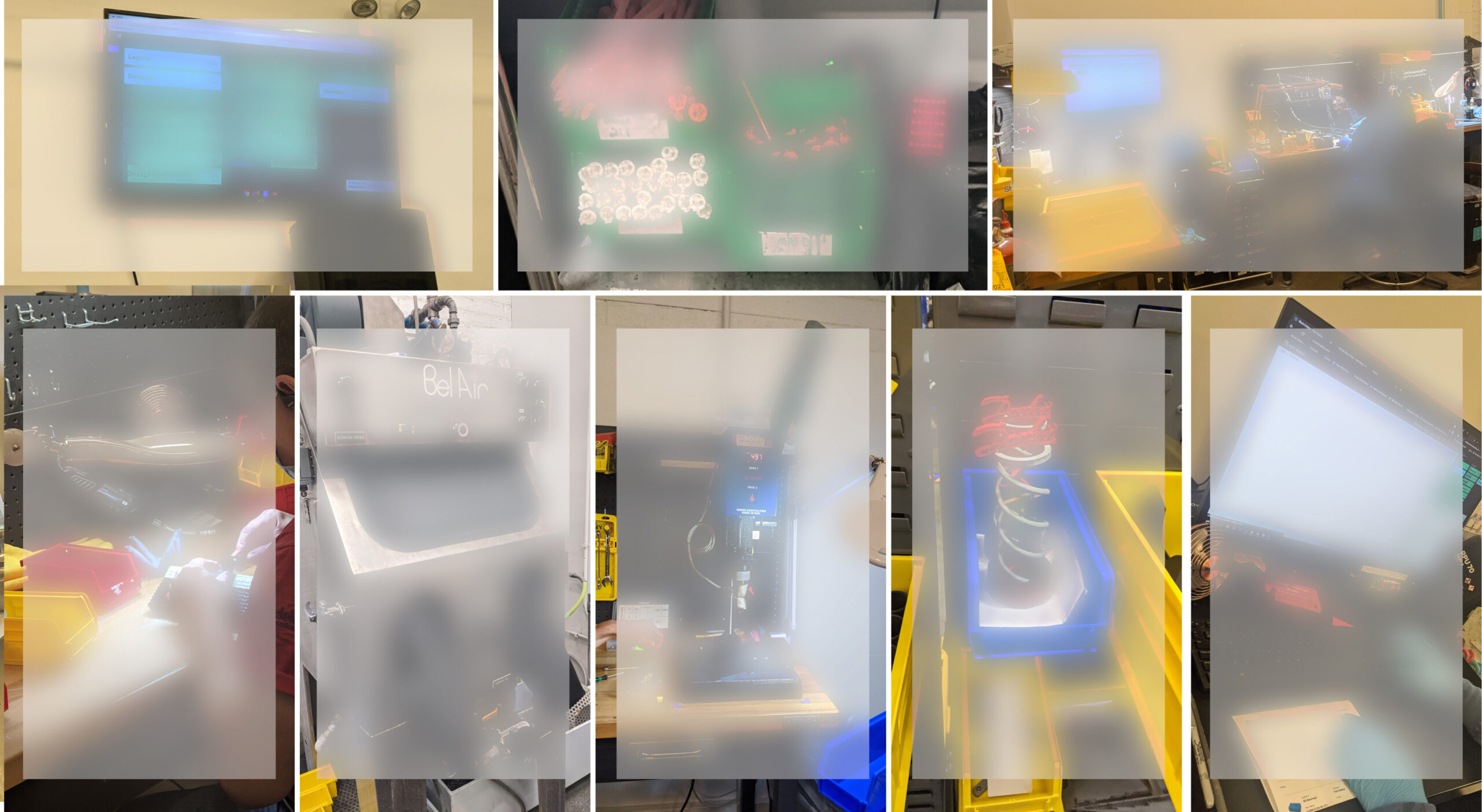
I compiled an analysis report that included the names and roles of the observed users, annotations, additional questions that arose during the research, and the key takeaways from the observations.

2. Exploration
Operations flowchart
After acquiring a detailed understanding of the industry, business model, company services, and users' pain points, I proceeded to the exploration phase. I created an operations flowchart to comprehend the entire workflow within the factory and the roles involved in it.
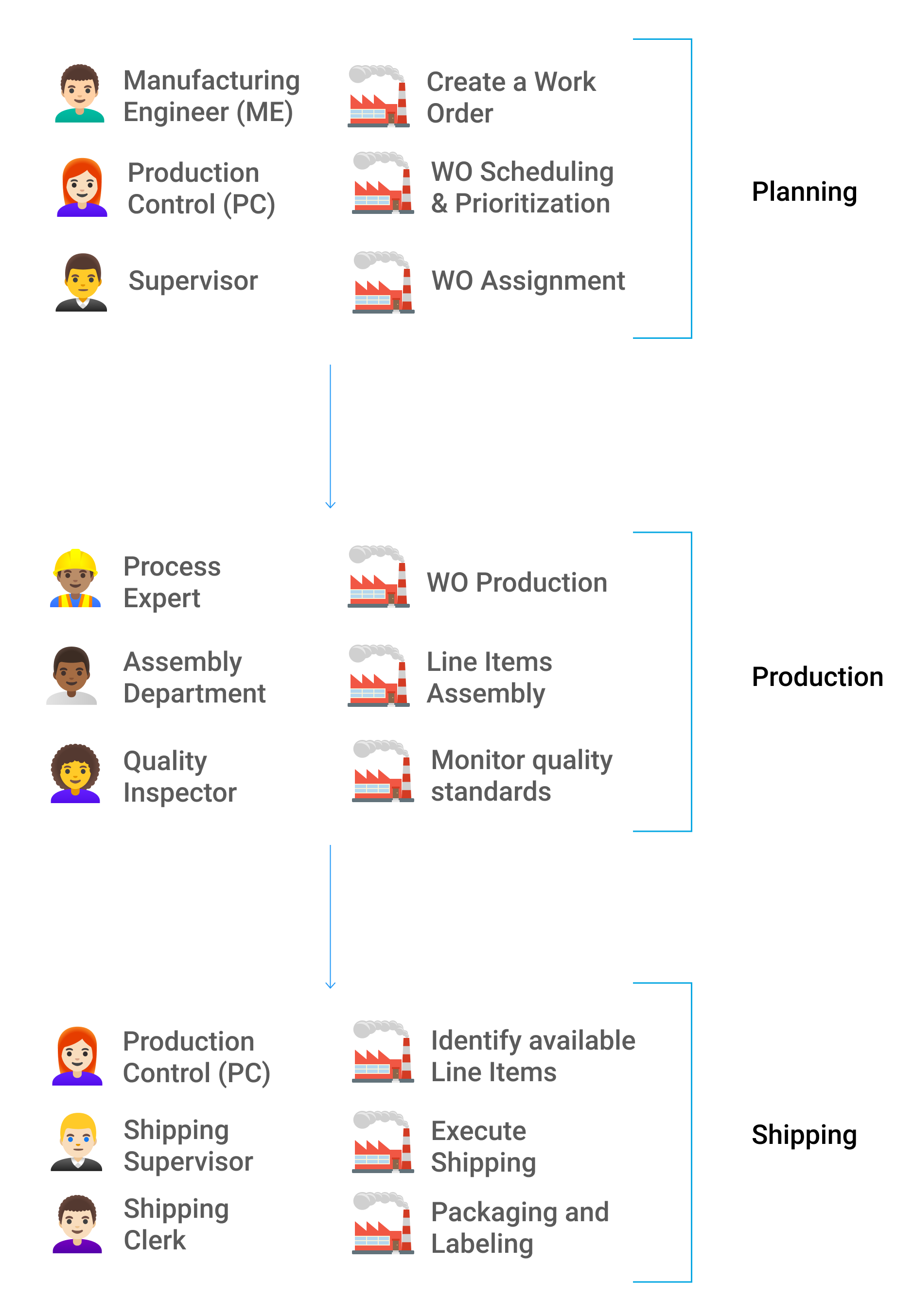
Workflow
I had multiple meetings with the product manager and lead engineer to establish the workflow for the solution. Using the information gathered in these meetings, I could create rough sketches in collaboration with my team.


3. Design and prototype
I created a mood board to identify common UX/UI elements used in similar platforms. I captured the following findings:
Common features



Opportunities
✅ The UX of internal factory platforms is outdated


I was able to understand the current state of the industry and identify opportunities for improvement with the following mood board.

Design
After several rounds of discussion and input from the product manager, lead engineer, and various leadership stakeholders, I was able to transform the sketches into wireframes and developed a complete flow with a functional prototype on Figma.
👇 Before/after slide module 👇


4. User interviews

After gaining a thorough understanding of the industry, business model, company services, and users' pain points, I created an interview script to gather specific information from my users. I worked with the product manager to develop a set of questions to address the following topics:





5. Usability testing
After finalizing the design and ensuring prototype functionality, we conducted 10 user testing sessions over a month with diverse users, creating a script of questions to guide them. Users were enthusiastic about the product. I compiled a report on feedback and worked with the design and product managers to identify actionable opportunities for improvement. This collaborative effort helped us determine the best course of action based on user feedback.


6. Refinement and implementation
After identifying opportunities for improvement, we applied iterations to the design and eventually deemed the product ready to be handed off to engineering. To ensure consistency, I utilized my favorite Figma plugins to verify that all text and color styles were accurately applied, components aligned with the 8pt grid guide, and were linked to a master component in the local design system file. The hand-off process involved multiple stages.
However, the product is never truly final. As the company expands and users' needs change, the system requires greater flexibility. I learned that the key to success is not to create a product that fulfills current needs, but one that is scalable, adaptable, and open to future iterations.
7. Impact and benefits

Improved quality control.





Selected Work





